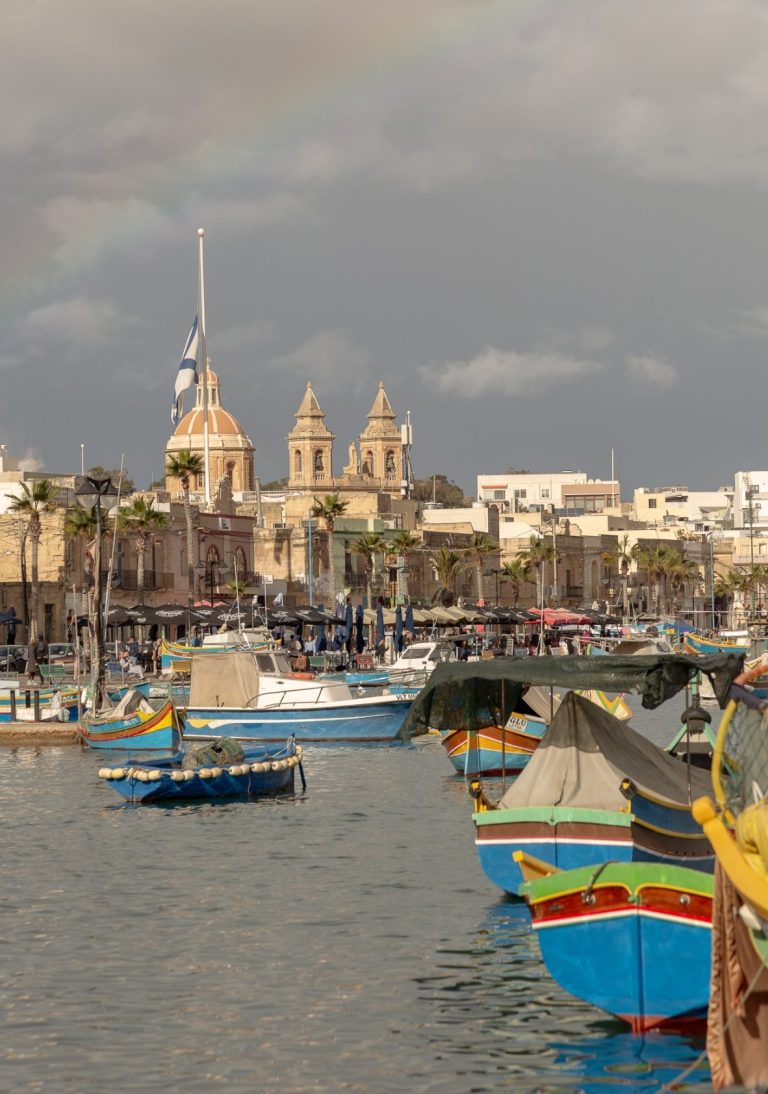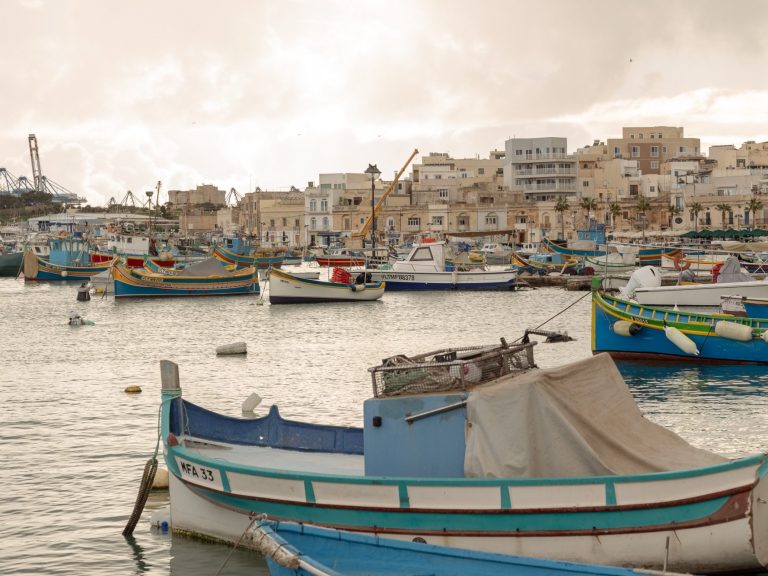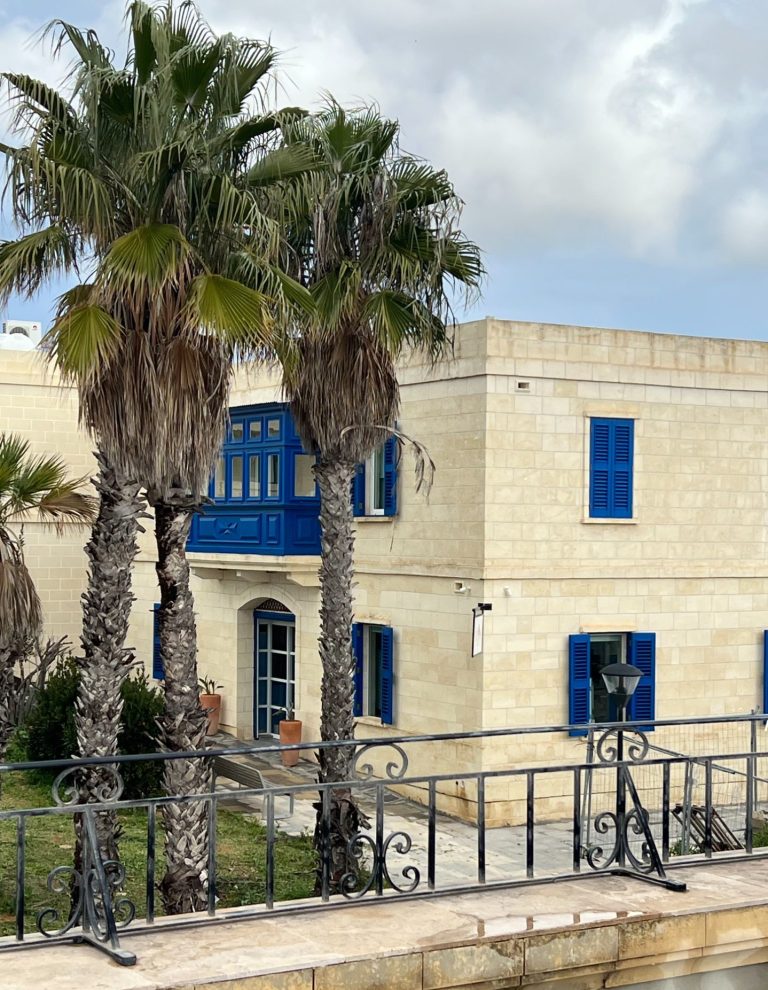Malta: A Multicultural Mosaic of Harmony and Heritage

The charming island of Malta is a cultural crossroad where the histories, traditions, and influences of diverse nations come together.
Malta, which is tucked away in the Mediterranean, enchants tourists from all over the world with its breathtaking architecture, rich history, and peaceful multicultural setting.



Blend of Cultures in Malta
A Cultural Mosaic in the Heart of the Mediterranean

Upon arrival, you’ll notice how the island’s rich history and culture reflect influences from Arab, French, Italian, and British traditions.
The ivory-colored walls of Malta’s historic buildings, paired with vibrant windows and doors, exude a cheerful atmosphere even on cloudy days.
The glowing evening streets of Valletta, Malta’s capital, feel like a warm embrace, offering visitors a sense of belonging and hospitality.
Unity in Diversity: Malta's people and traditions
The people of Malta form a welcoming community that transcends boundaries of appearance, language, or religion. Here, diversity is celebrated, and traditions are cherished.
Malta is renowned for its artisanal crafts, such as those created by the company
Nem-Nem - Maltese for “candle flame.” This enterprise showcases multicultural collaboration, as artisans from various countries work together to produce candles, soap, and sweets. Despite their different origins and languages, these craftspeople share a love for their work and for Malta’s inclusive culture.
“The Maltese are reserved in their emotions, but once they understand that you wish them well, they begin to trust you, open up, and a special atmosphere of communication is born.”
– Liena Cīrulniece, Latvia
Language and Culture: A Blend of Influences
Religion plays a significant role in Maltese life, with Roman Catholicism dominating the island’s spiritual landscape. Remarkably, Malta boasts 359 churches within just 316 square kilometers. Yet, the island’s multicultural ethos allows room for other faiths, including Protestantism, Islam, and contemporary spiritual practices.

The Maltese language itself reflects the island’s multicultural heritage. With roots in Arabic and significant borrowings from French, Italian, and English, the language often sounds like a rich, harmonious mix.
Malta’s unique cultural ties are also evident in everyday life, from left-hand driving to British-style sockets, pedestrian crossing lights and even the red phone booths - all remnants of its British colonial history.
Exploring Malta's Multicultural Gems

One of the most fascinating places to experience Malta’s multicultural legacy is Casa Rocca Piccola. This historic home, still inhabited by a Marquis, doubles as a living museum. Its 12 rooms take visitors on a journey through time, showcasing how Maltese identity has evolved from the era of the Knights of Malta to modern-day influences.
Malta’s architecture further highlights its rich history. The island is dotted with fortifications and bastions, with nearly every major city featuring its own defensive structures. These well-preserved landmarks stand as proud symbols of Malta’s storied past.



Nature's Contribution to Malta's Harmony
Malta’s flora adds to the island’s sense of harmony. Plants that typically thrive in pots on European windowsills grow into magnificent trees and lush bushes here, flourishing under Malta’s favorable conditions. Together with the island’s architecture, this lush greenery creates a tranquil and picturesque environment that enchants visitors.

A Legacy of Harmony and Prosperity
Malta, wise with its multicultural heritage, recognizes two official languages: English and Maltese. The island’s residents often recall the days of British rule with neutrality and respect, reflecting their open-minded approach to harmony and coexistence. This attitude has helped Malta foster a prosperous and inclusive environment, making it a shining example of multicultural unity in the modern world.
Malta's Timeless landmarks: A Journey throught History
Malta’s landmarks are more than just historical sites—they reflect the island’s rich identity, shaped by centuries of cultural influence. From the fortified Mdina Gate to the repurposed Pjazza Teatru Rjal, where ruins of an old opera house now host open-air performances, Malta seamlessly blends its past with modern life. Monuments like the statue of Sri Chinmoy and the memorial to Daphne Caruana Galizia embody the island’s values of peace, resilience, and truth, while coastal defenses like It-Torri ta' San Luċjan tell stories of protection and openness to the world.
Each site holds a piece of Malta’s story. Watch the video below to explore these timeless landmarks and experience the island’s cultural legacy.
The training course ”Sharitage” by Fgura UFC held 11–18 January in Malta aimed to inspire and equip youth workers from Georgia, Italy, Latvia, Malta, Morocco, Serbia, Moldova and Turkey on how to learn and teach tolerance and anti-discrimination to young people nowadays, based on discovering multicultural heritage of Malta as evidence of successful coexistence of various cultures; as the final output of the activity has to be a creation of one or more media products (video, photo, graphic journalism).
Disclaimer: Funded by the European Union. Views and opinions expressed are however those of the author(s) only and do not necessarily reflect those of the European Union or the European Education and Culture Executive Agency (EACEA). Neither the European Union nor EACEA can be held responsible for them.
Participating organizations:
Fgura UFC (Malta), Train of Future Larache (Morocco), MeDiaLog (Republic of Moldova), Young Effect (Italy), RICDOG (Georgia), Miromida (Latvia), Jedi Movement (Serbia), Duvar Youth and Consultancy (Türkiye)
Participants:
Fatima, Insaf, Mehdi, Abderrahmane, Larkin, Shamus, Manuel, Petra, Evghenii, Natalia, Andrei, Alexandr, Mehwish, Ilaria, Marco, Giorgia, Levani, Teona, Giorgi, Tatia, Valters, Liena, Elina, Kristina, Iva, Milos, Kristina, Ilija, Duru, Betul, Yigit, Serhan
We need your consent to load the translations
We use a third-party service to translate the website content that may collect data about your activity. Please review the details in the privacy policy and accept the service to view the translations.







